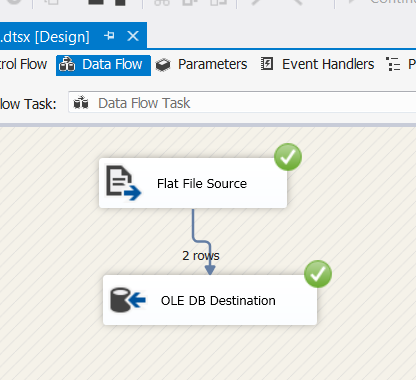Author: Randy Sims
Dynamic SQL – Two Ways to Make a SQL String and Run It
Dynamic SQL is just like it sounds: creating a SQL statement dynamically. A normal SQL Statement is just the string you are going to run. SELECT FIELD1, FIELD2, FIELD3 FROM TABLE1; But should you have a good business reason to do so, maybe you want to dynamically create the queries. (Personally, Dynamic SQL is the last […]
Continue Reading...Create an SSIS Package to Import a File
This is an easy run through tutorial of how to create a SQL Server Integration Services (SSIS) package to import a file. This is the most basic task there can be for a product named “SQL Server Integration Services.” We are going to connect the database to a file so the data from the file […]
Continue Reading...SSIS: Change Encryption on a Project and Packages
When creating packages, the default security protection level is set as EncryptSensitiveWithUserKey. The user key mentioned is created off of the login of the user who created the project. If a developer other than the one who originally created the project or package opens it, they will receive the following warnings:
Continue Reading...Querying Oracle Nested Tables
Nested tables are one method you can use in Oracle to store a one-to-many relationship. You essentially put a table inside of another table. The nested table is actually stored separately and is linked to the original table by the unique row id. Working with this kind of table and the data within is different.
Continue Reading...EDGE Training Method
EDGE is a basic teaching tool designed to guide the instructor in a series of steps that will include all learning styles. This is the training method taught by the Boy Scouts of America. Since attending the class, I have used this method for all the training materials I create.
Continue Reading...Full Outer Joins
When you want to see a list of all values from two tables in a join, even if there are no matches, you want the Full Outer join. It fills in nulls on both sides where needed.
Continue Reading...Using IN, ANY, and ALL Queries
ANY and ALL queries are related to IN queries in that they are used for multi-row returns. They also allow comparisons to be made (equal, not equal, greater than, less than, etc.).
Continue Reading...Order of SQL SELECT Clause Evaluation
SQL Clauses are evaluated in the following order: Find Where Good Snakes Have Oaths FROM clause WHERE clause GROUP BY clause SELECT clause HAVING clause ORDER BY clause
Continue Reading...Java Programmer 1 Exam Topics
1Z0-808 – DevCert: Java SE 8 Programmer
Continue Reading...Linux Echo and Reading Files
Assigning values to variables, using ECHO and reading a file.
Continue Reading...